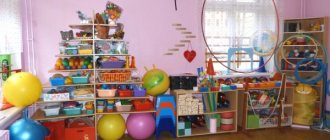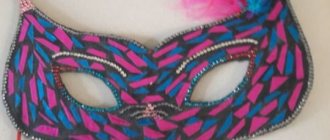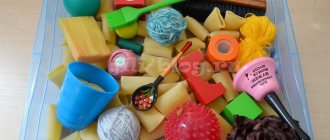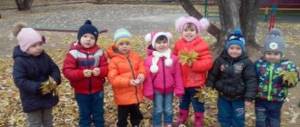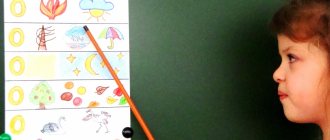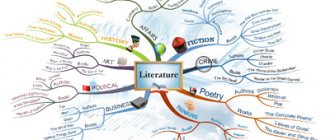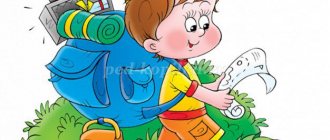Art therapy methods allow psychologists to better understand a person’s problems and at the same time solve them unobtrusively and in a gentle way. In some situations, the language of shape, color palette and imagery is much more informative than ordinary conversation.
Art therapy has proven itself especially well in working with children. It is still difficult for kids to verbally express their worries and experiences, but with the help of modeling from salt dough this is easier to do. Testoplasty is one of the popular trends in modern art therapy.
Modeling figurines from salted and environmentally friendly dough has been known since the times of Ancient Egypt. Slavic peoples made amulets and gifts from dough for loved ones, endowing them with a special magical gift to protect and attract wealth.
Today doughplatiska is the sculpting of literally anything your heart desires from specially prepared salted dough. It contains only flour, water and salt. Afterwards, the product can be dried in the sun or in the oven, and also painted using gouache or acrylic paints.
Testoplasty for children brings only positive emotions and pleasure to children of any age and even adults. It’s so nice to knead it in your hands and see how pliantly it responds to our movements. This useful and very exciting activity lifts the mood of the child and the adults around him. This type of art therapy has many benefits for the child:
- develops fine motor skills of the hands (which accelerates the development of speech);
- improves the baby’s emotional state;
- develops imagination and thinking;
- helps to see the whole before the parts;
- promotes timely psychophysiological maturation;
- helps to accumulate sensory experience of tactile sensations;
- instills a value attitude towards a person, his work, culture;
- teaches you to interact and quickly adapt in society.
Testoplasty is an excellent activity for children with speech development problems, hyperactive fidgets, socially unadapted and withdrawn children.
This is an excellent opportunity to give shape to your thoughts, and sometimes fears (in the latter case, the figurine is disposed of, freeing the child from the problem). By forming positive emotions upon completion of a craft, you can then show it to people significant to the child and even give it to someone, at the same time receive approval from others and be proud of yourself.
In addition, in order for a bunny or bun to turn out beautiful, you need to be diligent and try hard. Doing testoplasty with parents helps adults get closer and establish contact with the child. Modeling from dough is also the first stage in the development of a child’s creative talents, his imagination and fantasy.
Testoplasty in art therapy for adults
Psychologists also use this correction method to help adults. It is often used as an adjuvant therapy in the rehabilitation of the elderly and those with special needs. The objectives of testoplasty are to help a person improve his emotional background through creative expression, reveal his capabilities and talents, and identify psychological problems that are located in the unconscious. The psychologist helps the client mobilize internal resources and lead him to spiritual harmony.
Testoplasty in combination with other methods of psychocorrection opens up horizons for self-expression of people with disabilities, awakening their interest in life and mental alertness.
How to make salt dough
In testoplasty, salt dough familiar to all young mothers is used. The composition of the modeling dough is very simple:
- 300 g flour
- 300 g salt
- 200 ml water
- 1 tbsp vegetable oil (optional)
Mix salt with flour and, stirring the mixture thoroughly, gradually add water. Experienced art therapists recommend using finely ground salt and adding a tablespoon of refined oil to the mixture to make the consistency more elastic. The unused portion of the dough can be stored in the refrigerator until the next session.
You can see how to prepare salt dough and what materials you will need for creativity in this detailed video tutorial:
How to sculpt from salt dough
Dough is an incredibly pliable material from which you can mold anything: from pots and animal figures to panels of various sizes. Therefore, crafts made from salt dough provide a huge scope for imagination, developing skills and creating wonderful things for decoration, games and gifts for each other.
To create the simplest dough products, it is enough to have a rolling pin and a board; for children over three years old and adults, you can stock up on culinary decor and use toothpicks to draw details.
For almost all dough crafts, the workpiece is usually a “sausage” or a “ball”. To create, for example, a little man, a ball is used for the head, and sausages are used to sculpt the body, arms and legs.
Complex shapes can be created from rolled out dough using templates and molds. You can decorate the product with ribbons, beads, leaves or braids made of dough or anything else of the child’s choice. And of course, a special stage is painting the resulting figure.
You can paint crafts made from salt dough with your own hands, both at the modeling stage, and while kneading the dough and after the product has completely dried.
And you can dry crafts made from salt dough at room temperature, in the oven at 50 degrees and in the microwave on the lowest defrost setting. Drying dough products, of course, will take time, but then such a gift will delight its creator and owner for a long time!
How to make casts from salt dough
An example of an art therapy lesson with children
Crafts made from dough can become an independent activity for children of preschool and primary school age. An activity can provide additional educational information, for example, by making an owl from salt dough, telling the child all the interesting facts about this bird. But the big advantage of testoplasty is that modeling itself brings tangible benefits, both to mental processes and psychologically harmonizing consciousness.
On the eve of March 8, I conducted such a lesson with my son. The topic was banal - preparing gifts for teachers with your own hands. Despite the fact that at first I had to persuade him to go sculpt, then I couldn’t stop him! So he went wild, creating crafts one better than the other)))
So we got these 8s with flowers and baskets with fruits and flowers.
As soon as our dough crafts are dry (and they dry in the oven at a low temperature and just in the room), we plan to glue magnetic tape to them so that they become a warm decoration for the refrigerator of our favorite teacher)))
In this video I showed our vision of modeling salt dough for the holiday of March 8:
The video below presents several more master classes on making crafts from salt dough:
Master class for teachers on testoplasty
Author-compiler:
Epanchintseva Irina Svyatoslavna,
teacher
MAUDO of the city of Yalutorovsk “Kindergarten No. 9”
highest qualification category
Teaching experience 27 years
USING TESTOPLASTY TECHNIQUES AS A MEANS OF DEVELOPMENT OF PRESCHOOL CHILDREN
Goal: To present the possibilities of testoplasty as a means of development of preschool children
Tasks:
- Introduce master class participants to testoplasty techniques.
- Show a system for working with dough as a material for children’s creative activities.
Equipment: salted dough, blank for making the “Chicken” craft, material for decorating the craft.
Progress of the master class
An important role in creating a modern educational environment today is played by innovative technologies aimed at developing the interests of children with special educational needs, based on the principle of fantasy in play activities.
Dough modeling is as natural and organic a child's need as play. Testoplasty is one of the most fascinating types of decorative and applied art.
Making dough from flour, salt and water is an ancient custom and was used to make figures from folk tales. In Rus', figurines made from this material were given as gifts for the New Year as a sign of prosperity, fertility, and satiety. And they were decorated with paintings characteristic of the area where our ancestors lived. It was believed that any craft made from salt dough found in the house is a symbol of wealth and prosperity in the family, and bread and salt will always be on the table. That is why these figures were often called very simply - “Hospitable Man”.
The dough has a number of advantages:
• The material is environmentally friendly, non-allergenic.
• Surprisingly flexible material.
• Crafts made from salt dough are more durable and can be used in games.
• Crafts can be painted in different colors.
Difficulties may arise when working with the test:
- You need to learn how to knead the dough. It’s a mistake when we take a lot of flour, it’s better to use less and knead well. Dough recipe: 1 glass of water, 1 glass of fine salt, flour.
- It is necessary to take into account thematic planning when developing a circle program.
There are no limits to your imagination when working with the test!!! The process of work is the joy of learning. The child brings his sincere interest, surprise or admiration into his work; he not only reflects the world, but also gets to know it. The educational and educational value of modeling is great, especially in terms of mental and aesthetic work. Working with dough allows you to solve a variety of problems and is aimed at:
- development of the sphere of images and representations;
- formation of mental activity: stimulation of mental activity, formation of mental operations, development of visual forms of thinking (visual-effective and visual-figurative), concrete-conceptual (verbal-logical);
- development of spatial gnosis and constructive praxis;
- formation of spatio-temporal representations;
- development of mental abilities through mastering the actions of substitution and visual modeling in various types of activities;
- development of hand-eye coordination, stimulation of reflex zones and nerve endings of the palms and fingers;
- activation of the formation of connections between the hemispheres of the brain;
- development of creative abilities.
In addition, special tasks of development and correction of deficiencies in the emotional-volitional sphere and the emerging personality are also solved, which implies:
- development and training of mechanisms that ensure the child’s adaptation to new social conditions;
- prevention and elimination of occurring affective, negativistic, autistic manifestations, and other behavioral deviations;
- development of social emotions;
- creating conditions for the development of self-awareness and self-esteem;
- formation of the ability for volitional efforts, voluntary regulation of behavior;
- preventing and overcoming negative personality traits and developing character.
The use of testoplasty is indispensable for the prevention of severe emotional disorders, undeveloped communicative competence, with the aim of developing play activity, developing play motives and interest in the game in a child. Testoplasty provides a child with ample opportunities to react emotionally in a socially acceptable way.
During joint activities with a child, the use of testoplasty techniques makes it possible to consolidate color, quantity, shape, ordinal and backward counting, as well as expand and clarify knowledge about the world around us, using riddles, poems, proverbs and sayings.
Testoplasty helps to activate vocabulary, update existing ideas about sensory standards of color, shape, size; strengthening ideas about seasonal changes in nature. Even restless children during the testoplasty process show such a long concentration of attention on one type of activity, which is unusual for them.
There are practically no children who would refuse to experiment with the dough, leaving imprints on it with various objects, play with molds and stacks, or make something of their own choosing.
In correctional and developmental work, you can use various didactic games and play exercises, the material for which will be dough products. For example, in the didactic game “The Fourth Extra”, you can ask children to find an extra figure made from dough (the child must highlight the difference - by color, shape, size). You can invite children to independently make all the figures the same by changing the sign of inconsistency.
In the game “Find out by touch,” we invite children to recognize a given object by touch (this can be fruits, vegetables, toys made from colored dough by the child himself). In addition, testoplasty opens up wide opportunities for the development of elementary mathematical concepts in preschoolers.
Children can make their own material from dough to develop counting skills and operations. It is possible to consolidate and update such mathematical concepts as “one-many”, “more-less”, “equally”, “long-short”, “wide-narrow”, “big-small”, etc. All objects with which the child acts and which are created by him as a result of productive activity serve as a visual support for speech and thinking exercises. Moreover, in this case, clarity is represented by volumetric objects, and not by illustrative material.
Working with a test is a kind of exercise that helps in the development of fine differentiated movements, coordination, and tactile sensations necessary for children with disabilities to work. Productive activity acts as a specific imaginative means of understanding reality, and therefore is of great importance for the mental development of children. In turn, the mental education of a child is closely related to the development of speech.
Testoplasty is an opportunity to use available material:
- Spaghetti (hedgehog spines)
- Colored macaroni and vermicelli (cake decoration)
- Cereals (we laid out a fur coat for a bear made from buckwheat)
- Peppercorns (nose, eyes)
- Garlic press (hairstyles)
- Stacks (draw)
- Buttons (make a relief surface)
This is how, through play, based on a common passion, testoplasty helps children develop, and teachers help solve assigned correctional and educational tasks.
I start each club session with a warm-up:
- Shifting and squeezing the dough in your palms;
- Rolling a kolobok in your palms;
- Pressing on the bun produces a flat cake;
- The “mice” came and began to dig holes;
- The “geese” came and began to pinch the dough;
- The “toed bear” came and began to stomp on the dough;
- Rolling the flatbread into a sausage;
- Wrap the sausage in a “snail”;
- The “snail” hid in the house - it turned out to be a bun.
After warming up, we move on to making crafts. I suggest making an Easter chicken (the idea for the craft was taken from the website https://yasno-solnishko.ru).
To begin, we will knead salt dough from 2 tbsp. flour, 1 tbsp. fine salt and half a glass of water. Add yellow gouache.
- Then we roll out the dough into a layer about 0.5 cm thick and squeeze out an oval with a mold. We will take a plastic cup as a mold and lightly press it on the sides to make an oval.
- Separate the oval from the rest of the dough and smooth its edges with a finger slightly moistened with water. This is the body of a chicken.
- For the wings, we make small ovals, roll them out thinly, lightly moisten them with water and glue them to the chicken. Using a toothpick, draw feather stripes on the wings.
- Roll small balls for the eyes and a square for the beak.
- For the legs we make small ovals and roll them out using gouache.
- We will make holes in the workpiece - one at the top for hanging the egg and two at the bottom for attaching the legs. We will also make holes in the legs for attaching to the chicken.
- Then we dried everything in the oven at low temperature.
- Once the dough has cooled, we will paint the details.
- Insert ribbons into the holes.
Well, our Easter chicken made from salt dough is ready. You can use it to decorate your room or as a gift.
Testoplasty acts as a means of understanding reality, is of great importance for the mental development of children, and helps maintain positive motivation and cognitive activity of children with psychophysical disorders. Thus, the possibilities of testoplasty in correctional and developmental work are limitless.
Literature:
- https://aplik.ru/shkolniku/9-klass/ispolzovanie-priemov-testoplastiki-v-korrektcionnopedagogicheskoi-rabote-s-detmi-s-ogr/
- https://io.nios.ru/articles2/51/10/testoplastika-v-detskom-sadu
- https://yasno-solnishko.ru/detki-3-5-let/pashal-ny-j-tsy-plyonok-iz-solyonogo-testa.html
“Certificate of publication in the media”: Series A No. 0004382
We invite teachers of preschool education in the Tyumen region, Yamal-Nenets Autonomous Okrug and Khanty-Mansi Autonomous Okrug-Yugra to publish their teaching materials: - Pedagogical experience, original programs, teaching aids, presentations for classes, electronic games; — Personally developed notes and scenarios of educational activities, projects, master classes (including videos), forms of work with families and teachers.
Why is it profitable to publish with us?
1. 1. “Kindergartens of the Tyumen Region” is an officially registered specialized media outlet at the federal level. 2. The activities of the editorial office are supported by the Department of Education and Science of the Tyumen Region 3. We issue a “Certificate of Publication” in the media. 4. The document has a unique number, is entered in the register, has the original seal of the editorial office of the online publication and signature. 5. “Certificate of publication” in the media is sent to the author in both paper and electronic versions. In detail In detail >>> Sample “Certificate of publication of author’s methodological material in the media”.pdf
Share
